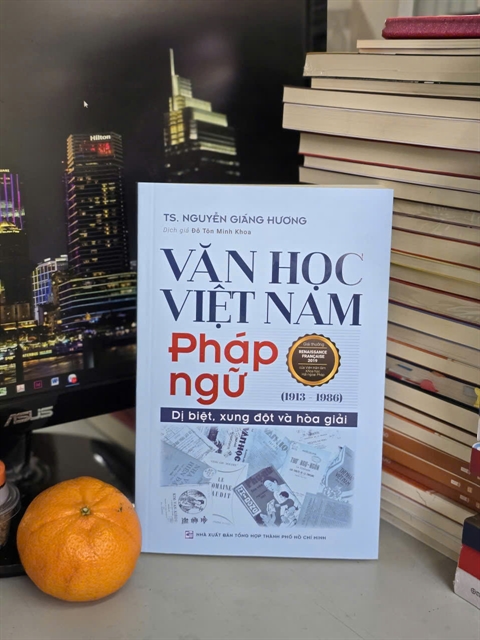 Life & Style
Life & Style
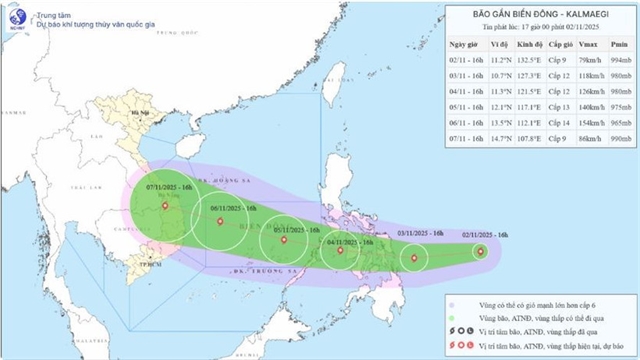
Craftsmen from the An Hội Coppersmith Village in HCM City’s Gò Vấp District are busy with orders for the Tết (Lunar New Year) holiday, with customers crowding shops buying their famous brass incense burners.
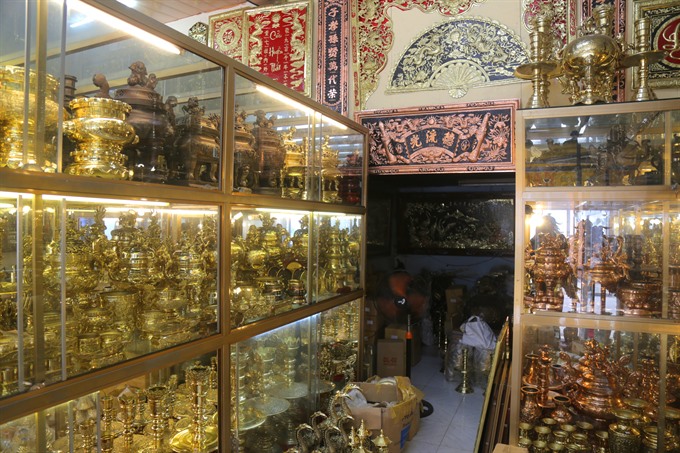 |
| Copper products made at a workshop in HCM City’s Gò Vấp District. |
by Ngọc Diệp
HCM CITY — Craftsmen from the An Hội Coppersmith Village in HCM City’s Gò Vấp District are busy with orders for the Tết (Lunar New Year) holiday, with customers crowding shops buying their famous brass incense burners.
During Tết, Vietnamese often buy a standard set of worship objects, which include an incense burner placed in the middle and two candlestands on the sides of ancestors’ altars to bring luck and prosperity.
At the bottom of the table, bronze vases, glasses, urns, tortoises and jars of wine are placed, along with statues of cranes.
Trần Văn Thắng, 70, owner of the Hai Thắng workshop, said he began learning coppersmithing when he was a child and passed the secrets of the work to the younger generation.
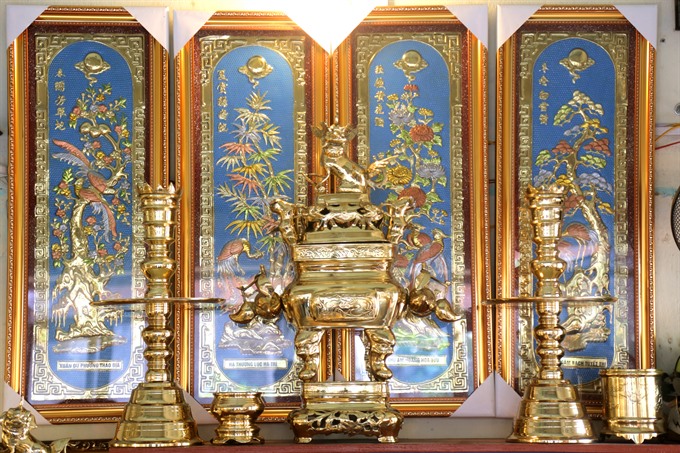 |
| A set of worship objects includes an incense burner and two candlestands placed on a family altar. |
Before 1975, the village had more than 50 workshops and households and hundreds of workers, producing a variety of copper products.
But now there are only five workshops keeping the craft alive.
With over 50 years of experience, Thắng said all stages of the production process, from preparing the wax mould to polishing the final product, require great patience.
“The success of the product depends on the craftsmen’s skills,” he said.
 |
| A beautiful incense burner made by skilled artisans. |
In recent years, traditional products have faced competition from products made by machine, so most of the artisans have improved designs to meet market demand, Thắng said.
“My family stayed with the craft during difficult times because we love it,” he said.
Trần Thị Thu Xương, 47, Thắng’s daughter, said the products for traditional ancestor worship took a lot of time to make.
“This year our sales have been slower than in past years,” she said. “However, we’re able to make a good living and offer jobs with a stable income for 10 people,” she said.
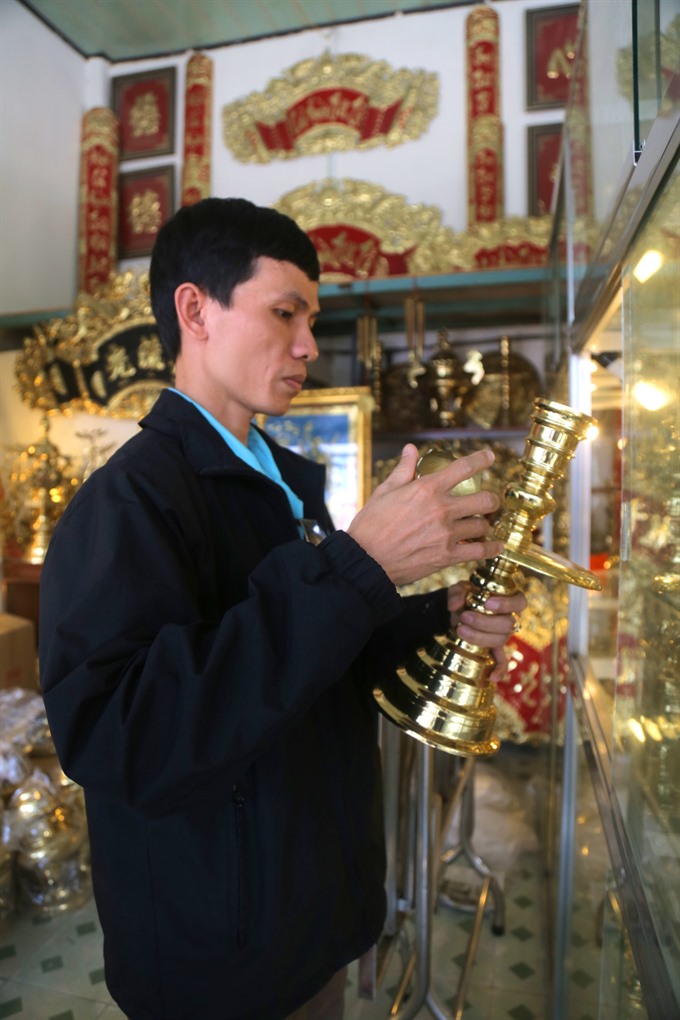 |
| A client inspects products at An Hội Coppersmith Village. |
Trần Minh Quốc, 34, son of the owner of the Năm Toàn workshop, said the workshop has about 20 craftsmen, mostly family members and relatives.
"I’m aware of the need to preserve our ancestors’ traditional values, so I decided to learn the craft,” he said.
Each month, his workshop provides about 200-300 products to the local market.
 |
| Crowds of customers visit coppersmith workshops to buy products for the upcoming Tết (Lunnar New Year) holiday. |
Nguyễn Thái Vương, 36, a walk-in customer from Bình Thạnh District, said he was looking for two candlestands for his set of worship objects.
“I visited workshops in An Hội Village and recognised that the traditional products here were made more skillfully, and were more beautiful than in other places,” he said.
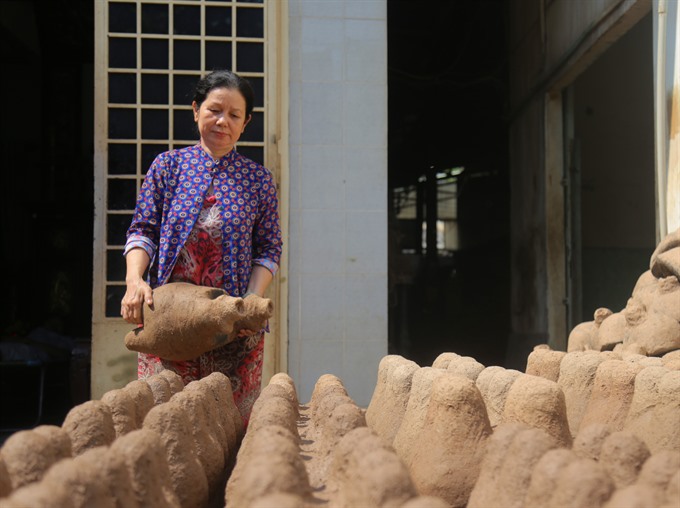 |
| A woman at a casting workshop dries clay pots under the sunshine. |
Over the last 100 years, the craft has been passed down by families in the area, but villagers say they need support policies to help them survive in modern times.
That may come sooner than expected. The city’s Department of Culture, Sports and Tourism conducted a survey of traditional craft villages, and included An Hội as one of the sites on the conservation list.
With such assistance, traditional craft villages in the city are expected to not only survive but prosper for many more years. — VNS




